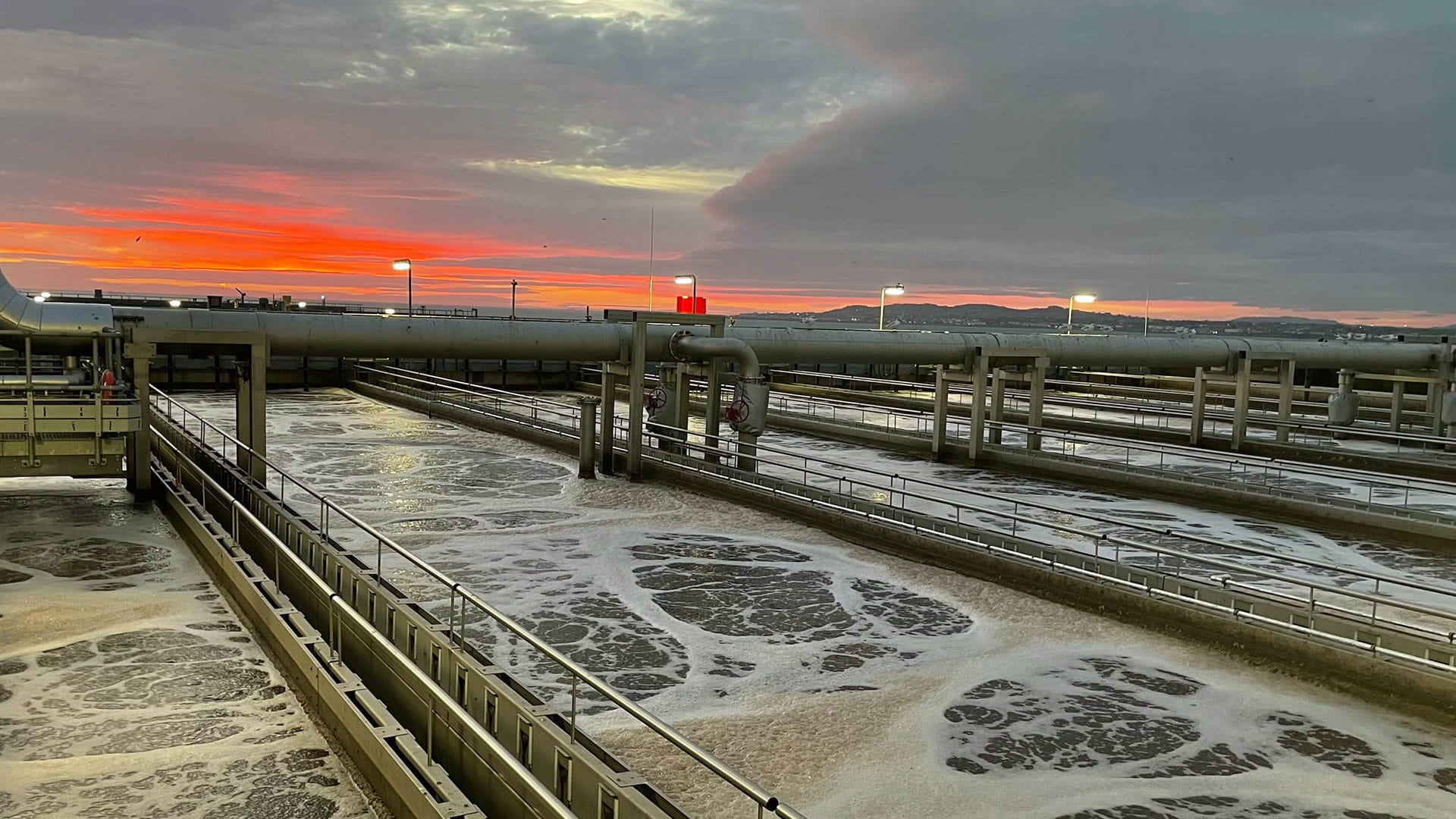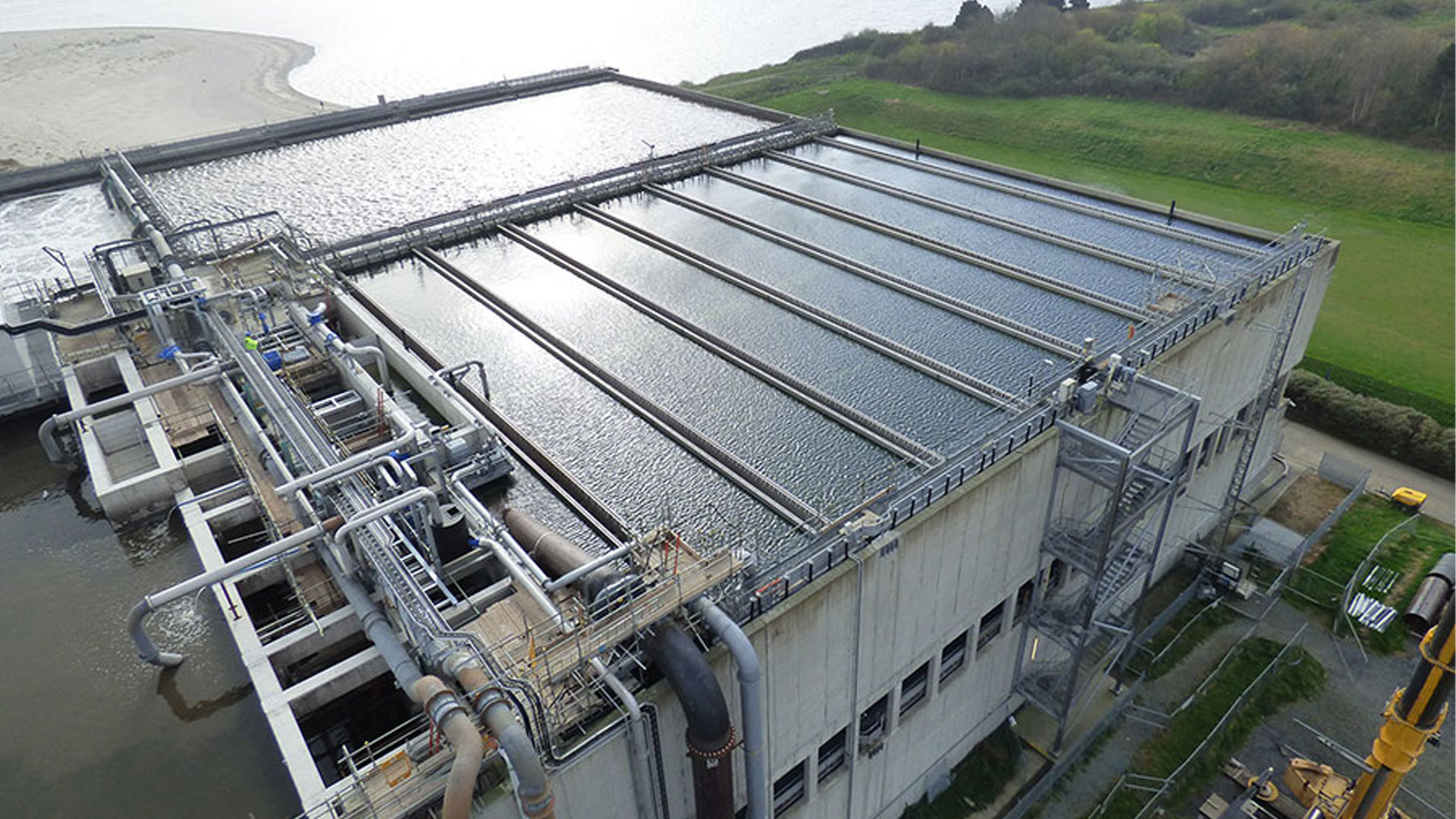Ireland - Dublin, Ringsend
The retrofit project to Ringsend wastewater treatment plant (WWTP) in Dublin extends treatment capacity to 2.4 million people equivalent (PE)

0Dry Weather Flow
0Peak Flow
0PE (PE = 60 gBOD/d)
Projects facts
- ClientIrish Water
- LocationDublin - Ringsend, Ireland
- Project typeRetrofit
- Date2017
- WastewaterMunicipal
- Process configurationPre-treatment + Primary settler + Nereda
About Ringsend Nereda® WWTP - Ireland
Ringsend is an inner suburb of the city of Dublin, Ireland. It is located on the south bank of the River Liffey and east of the River Dodder, about two kilometers east of the city center.The challenge
The existing Ringsend WWTP was commissioned in 2003 and had a design capacity of 1.64 million population equivalent, capable of handling a flow of 11.3 m³/second. But prior to its upgrade it was operating over that capacity, at 1.9 million p.e. The principal effluent requirements were based on only Carbon (BOD and SS) removal. The existing WWTP consisted of 24 SBR tanks, stacked in a two-layer deck of 12 SBR tanks per deck. Each tank had a volume of 13,500 m³.
The solution
To address the overloading of the facility and related bottlenecks in the operation – and to introduce nutrient removal to meet the level of treatment required by the European-based Urban Wastewater Treatment Directive – a major upgrade of the plant at the existing site was proposed. Irish Water selected Nereda technology for extending and upgrading the existing infrastructure and bringing the Ringsend WWTP capacity up to 2.4 million p.e. (144,000 kg BOD/d) and 600,000 m³/d, with a peak flow rate of 13.8 m³/sec.The major works of the project includes retrofitting existing SBR-cells to Nereda process and constructing additional new Nereda reactors on a remaining undeveloped plot on the existing site.

Image: Operational Nereda Reactor
The outcome
One of the characteristics of the project is its scale, with 40% of all Irish wastewater treated in this facility. The project is a complex one, as the treatment plant must remain operational throughout the retrofit, and there is only a small footprint available for extension. In addition, the existing sludge handling and treatment facilities needed to be adjusted to accommodate the increased sludge production.Through stepwise retrofitting existing ICEAS SBR cells into Nereda reactors and adding a 400,000 pe plant extension, the treatment capacity is increased and treated effluent quality is improved without compromising the existing treatment performance. In 2017, the first SBR-cell was retrofitted into a Nereda reactor, and this validated the retrofit procedure and demonstrated the design for treatment performance. Construction of the Nereda reactors for the 400,000 p.e. capacity addition started in early 2018 and start-up in 2021 enabled an increased speed of retrofitting the remaining SBR cells. Overall completion of the project is estimated to be in 2027.
Royal HaskoningDHV is working on the project with its Irish partners, TJ O’Connor & Associates and J. B. Barry and Partners. Celtic Anglian Water is operating and maintaining the Ringsend WWTP.
Read more on the Dublin, Ringsend WWTP Process Proving Step 1 and 2.
The local benefits of the project